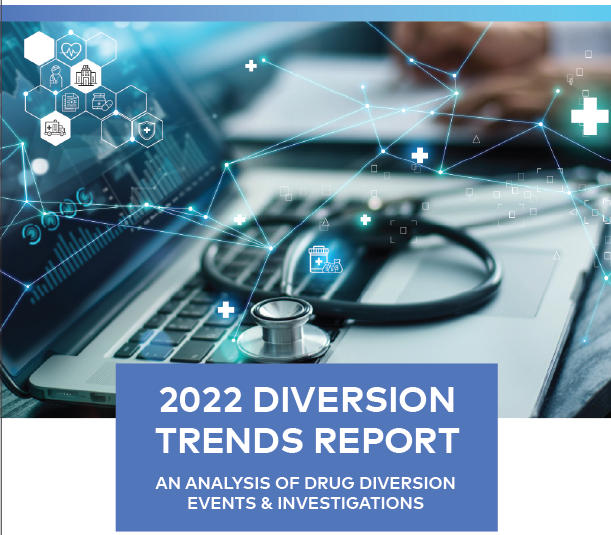
Kit Check recently released its 2022 Diversion Trends Report. In the report, Kit Check analyzed over 2 years of data, including over 50M controlled substance medication transactions from its diversion monitoring software, Bluesight for Controlled Substances.
This report highlights trends in drug diversion and provides insight into the types of diversions and investigations that may be occurring in hospitals. This allows hospitals to be better prepared to identify and manage drug diversion.
This year’s Diversion Trends Report highlighted the pandemic’s strain on staff, which in turn has impacted trends in drug diversion. The report also stresses the importance of proper organizational culture as it pertains to reporting diversion. The report found “a third of all investigations based on colleague and patient reports have led to a confirmed case of diversion.” Having a system in place where individuals feel comfortable reporting a suspected case of diversion is crucial. It’s important for teams to focus on fostering a culture of safety by having dedicated resources on diversion, as well as having a clear understanding on how to detect and report a suspected case of diversion. This can include resources on policies and procedures, as well as examples of proper documentation, inventory best practices and reporting best practices.
Here are the other key takeaways from the Diversion Trends Report
1.The Average Hospital Is Conducting Twice As Many Investigations
The number of investigations a hospital is conducting has doubled from an average of 11 to 24 investigations per year. As staffing shortages continue to impact the industry, the increase in the average number of investigations a hospital is conducting can be explained by the increase in travel nurses and temporary staff. With staff coming from different states, hospitals and sites, documentation practices may not be consistent, and training may be less comprehensive. Hospitals may look to software solutions to better standardize documentation practices. The Hospital Pharmacy Operations 2021 Report found over one-third of hospital pharmacists have ranked drug diversion software as their #1 technology initiative. It is evident that hospitals are taking the prevention and identification of drug diversion seriously.
2. As Hospitals Open More Investigations, They’re Taking Longer To Resolve
With an increase in the average number of investigations, each investigation is taking longer to resolve. The average time for an investigation to be resolved increased from 23 to 34 days. This may be due to a combination of staff shortages and increased workloads. As there are fewer staff members to do more work, the prioritization list of tasks may change. The strain on staff, processes and procedures, can be felt across departments even after the initial waves of the pandemic.
3. Fentanyl Accounted For The Largest Share Of Cases With Variances
Across all controlled substance transactions, fentanyl accounted for the drug with the largest amount of variances, accounting for 22% of all cases with a variance. Fentanyl is a potent opioid analgesic. It is commonly used in emergency rooms and intensive care units due to quick onset of action in controlling pain. Furthermore, fentanyl is used for post intubation care of patients which increased in frequency during the pandemic.
4. The Share Of Discrepant Transactions Has Gradually Improved
In the past 2 years, Kit Check has seen a gradual decrease in flagged medication transactions. This decrease is due to two factors. While hospitals have been improving their documentation practices, Bluesight has simultaneously improved its ability to identify true discrepant cases. This combined effort helps improve both staff and patient safety.
Overall, The Diversion Trends Report shows it’s vital that staff have a good system in place to encourage reporting suspected cases of diversion. A third of all investigations based on colleague and patient reports have led to a confirmed case of diversion. Data from Bluesight for Controlled Substances is best utilized with staff that understand how to identify diversion and feel comfortable speaking up.
To learn more about Bluesight for Controlled Substance, schedule a demo here.
About Bluesight for Controlled Substances
Bluesight for Controlled Substances helps take a proactive approach to drug diversion. Bluesight for Controlled Substances helps bring item-level visibility into a hospital’s controlled substance inventory and highlights activity that may pose a risk for diversion, so patients can receive the exemplary care they deserve. Click here to learn more about Bluesight for Controlled Substances.
By Hannah Kanfer